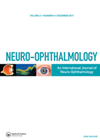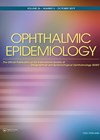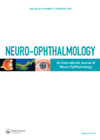
Journal Reviews
Screening for visual processing deficits in dementia
The Queen Square Screening test for Visual Deficits (QS test) screens for changes in visual processing. It has never been formally validated as a single test. The test consists of a short booklet developed using remnant object and spatial perception...
Screening and adherence to glaucoma care in Enugu, Nigeria
The authors present the findings of a cross-sectional survey of participants diagnosed with glaucoma during free eye screening. A total of 830 participants were screened from two outreaches:182 new glaucoma cases were diagnosed (63 glaucoma and 119 glaucoma suspects). There...
Comparison of treatment for hemianopia following stroke
The authors report the screening process and recruitment figures for a randomised controlled trial comparing interventions for post stroke homonymous hemianopia. Interventions included Fresnel prisms, visual search training and standard care (information only). Primary outcome measure was the change in...







